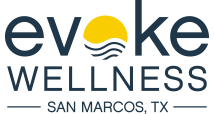You’ve probably heard someone say EMDR changed their life. That it helped them finally get free from years of trauma. And for some people, that’s absolutely true.
But here’s what doesn’t get said enough: EMDR isn’t a one-size-fits-all miracle. It’s a powerful trauma therapy—but only when it’s the right match, at the right time, for the right person.
If you’ve got a complicated history with therapy, feel guarded around your memories, or wonder why EMDR didn’t work for you when it seems to work for everyone else—this is for you.
Let’s unpack what EMDR actually is, who it tends to help most, where it can backfire, and what other options exist if your healing path looks different.
What Is EMDR, Really?
EMDR stands for Eye Movement Desensitization and Reprocessing. Developed in the late 1980s, it’s a structured, evidence-based therapy that helps people process trauma and distressing life experiences by stimulating the brain’s natural healing mechanisms.
How it works sounds odd if you’ve never done it: you recall a distressing memory while tracking your clinician’s hand movements (or sounds or taps) going left to right. That side-to-side stimulation engages both hemispheres of your brain, which may help reprocess how the memory is stored.
What does that mean practically? The memory doesn’t disappear—but it loses its emotional charge. It moves from something that hijacks your nervous system to something that feels like it’s finally in the past.
Important: EMDR isn’t talk therapy. You don’t have to tell the whole story out loud. And it isn’t hypnosis or mind control. You’re awake, aware, and in control the entire time.
Who Is EMDR Actually Helpful For?
EMDR is particularly effective for people with single-incident trauma—things like:
- A car accident
- A physical or sexual assault
- Witnessing violence
- A natural disaster
- Medical trauma
It also works well for first responders, veterans, or anyone exposed to repeated acute incidents they can recall and identify.
Other people who may benefit from EMDR:
- Those who’ve tried traditional talk therapy and still feel stuck
- People with intense panic, startle responses, or flashbacks
- Anyone who feels like their body knows they’re not safe—even when their mind does
When the nervous system is carrying trauma like a backpack full of bricks, EMDR can be the thing that helps set it down.
Who Might Struggle with EMDR (and Why)
Here’s the part most people don’t say out loud: EMDR isn’t always the best first step—especially for folks with complex trauma.
You might struggle with EMDR if:
- Your trauma isn’t a single event—it’s layered and long-term
- You have a history of childhood abuse, neglect, or abandonment
- You’ve developed protective dissociation (zoning out, memory gaps, emotional numbness)
- You struggle to stay grounded when distress comes up
- You’re still living in an unsafe or high-stress environment
If your survival strategy was “lock it away and don’t look at it,” EMDR can feel like kicking down the door before you’ve built emotional walls to hold you.
That’s why an EMDR Therapy Program in Texas—like the one offered at Evoke Wellness—takes your full story into account. This doesn’t mean you’re not ready for healing. It just means your nervous system may need a slower, more resourced approach first—something that doesn’t flood you with pain before you’ve built the capacity to hold it.
How to Know If You’re Ready for EMDR
Therapists who specialize in EMDR will always assess your readiness before beginning reprocessing sessions. That’s not gatekeeping—it’s safety planning.
You might be ready if:
- You have basic emotional regulation skills
- You can name your emotions and tolerate some discomfort without spiraling
- You’ve built a sense of safety with your therapist
- You’re not in active crisis (addiction, self-harm, or destabilizing life chaos)
And you don’t have to walk into EMDR knowing everything that’s happened to you. But you do need to feel safe enough, supported enough, and steady enough to go there.
That’s not weakness. That’s wisdom.
What to Try Instead of EMDR
If EMDR feels too intense or you’re not ready yet, there are other ways to heal—ways that still honor your trauma without rushing it.
Consider these trauma-informed alternatives:
- Internal Family Systems (IFS): Helps you connect with the protective parts of yourself that hold pain or fear. Great for people with complex trauma or emotional fragmentation.
- Somatic Experiencing: Focuses on how trauma lives in the body. You learn to release stuck survival responses without having to recount your trauma in detail.
- Sensorimotor Psychotherapy: Combines body awareness with attachment theory to support regulation and healing.
- Narrative Therapy: Helps you reshape the story you tell yourself about what happened—especially helpful if shame or identity wounding is part of your trauma.
- Attachment-Based Therapy: Builds trust through the therapy relationship itself. This is often a core need for those with early relational trauma.
You don’t have to pick the “fastest” method. You get to pick the one that meets you where you are.
FAQ: EMDR Therapy, Trauma, and Fit
What if EMDR made things worse for me?
You’re not alone. Some people experience emotional flooding, nightmares, or shutdown after EMDR sessions. That’s why preparation and resourcing matter so much. If it didn’t work for you, that doesn’t mean you failed—it may mean the approach didn’t match your nervous system’s needs at the time.
Is EMDR safe for people with PTSD?
Yes—when done appropriately. EMDR is evidence-based for PTSD, but it’s most effective when used thoughtfully and with proper preparation. Complex PTSD (C-PTSD) may require more foundational work before jumping into memory reprocessing.
Do I have to talk about my trauma in detail for EMDR to work?
No. That’s one of the benefits of EMDR—you don’t have to verbalize everything. Your therapist needs to know the target memory in general terms, but you’re not expected to narrate it all out loud.
What does a typical EMDR session look like?
You’ll start with grounding and check-ins, then move into reprocessing with bilateral stimulation. You’ll be asked to notice thoughts, feelings, body sensations, and images without trying to control them. The therapist checks in regularly, and you can pause anytime.
Can I combine EMDR with other therapies?
Absolutely. Many clients use EMDR alongside traditional therapy, group work, or body-based approaches. Your healing plan can (and should) be personalized.
Still Not Sure If EMDR Is Right for You?
You don’t have to figure it out alone. At Evoke Wellness San Marcos, we believe trauma work should be tailored—not templated.
Our clinicians are trained in EMDR and a range of trauma-informed approaches. We’ll help you sort through what makes sense for you, at your pace.
Call us at 888-450-2285 or explore our EMDR therapy page. Whether EMDR is your path or not, we’re here to help you find a way forward that honors your past without letting it define your future.



